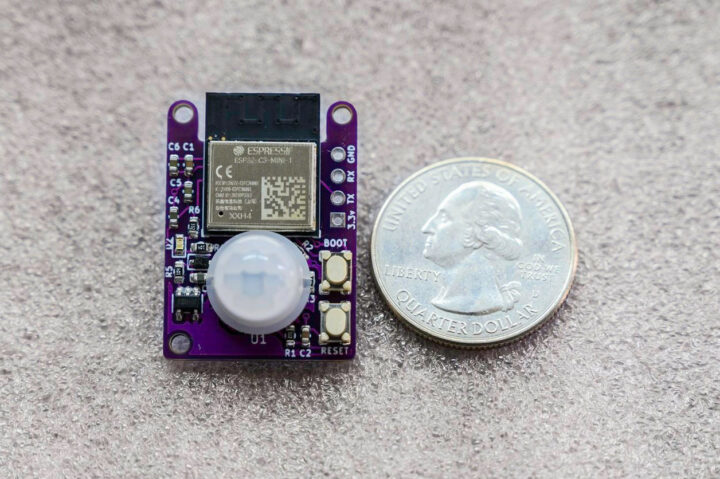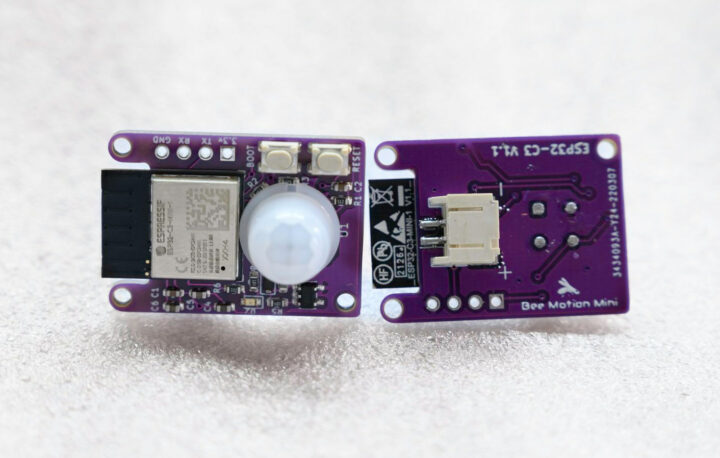Designed by Smart Bee Designs, the tiny Bee Motion Mini combines an ESP32-C3 wireless RISC-V SoC with a PIR sensor for motion detection reporting over WiFi, Bluetooth LE, or Bluetooh Mesh.
The board was designed to be as small as possible to fit into a 3D printed case with a LiPo battery and placed/hidden anywhere you want. Motion detection range is up to 5 meters, and the Bee Motion Mini can connect to services like MQTT, ITTT, or NodeRed to trigger other devices upon motion.
Bee Motion Mini specifications:
- Wireless module – Espressif Systems ESP32-C3-MINI-1 module with ESP32-C3 WiFi and Bluetooth LE 5.0 RISC-V SoC up to 160 MHz, 4 MB embedded flash
- PIR sensor – Passive infrared motion sensor with dome lens, 5-meter range
- I/O- UART Tx/Rx for flashing firmware, 3.3V, and GND
- Misc – BOOT and RESET buttons
- Power Supply
- JST PH.20 connector for LiPo battery
- 3.3V via header
- 3.3V regulator
- Dimensions – Small!
There’s no USB port on the board, and only I/Os are the Tx/Rx pins used to flash the firmware through an external USB to TTL adapter that is not included with the board. That also means you can’t trigger other devices upon motion through GPIOs, and it’s specifically designed as a purely wireless motion sensor. Neither USB and I/Os were included to keep the board as small as possible.
The ESP32-C3 PIR sensor board is not open-source hardware, but I suppose it does not matter that much since the design is pretty straightforward, and you can find an Arduino sketch on Github showing how to poll the PIR sensor. The Bee Motion Mini is listed on Tindie for $18, but is currently out of stock. You can always join the waiting list if you are interested.
Via Hackster.io

Jean-Luc started CNX Software in 2010 as a part-time endeavor, before quitting his job as a software engineering manager, and starting to write daily news, and reviews full time later in 2011.
Support CNX Software! Donate via cryptocurrencies, become a Patron on Patreon, or purchase goods on Amazon or Aliexpress






